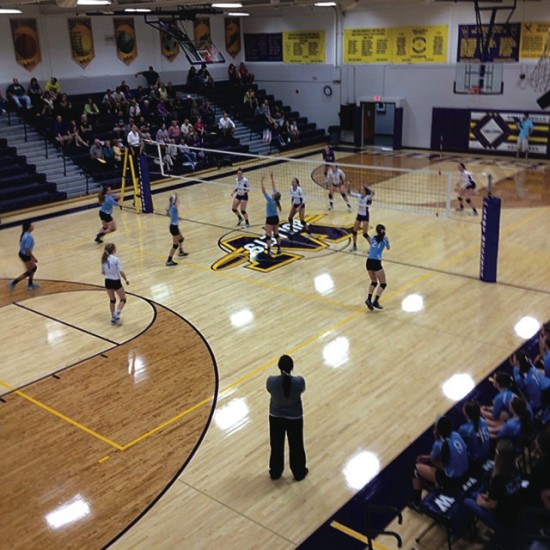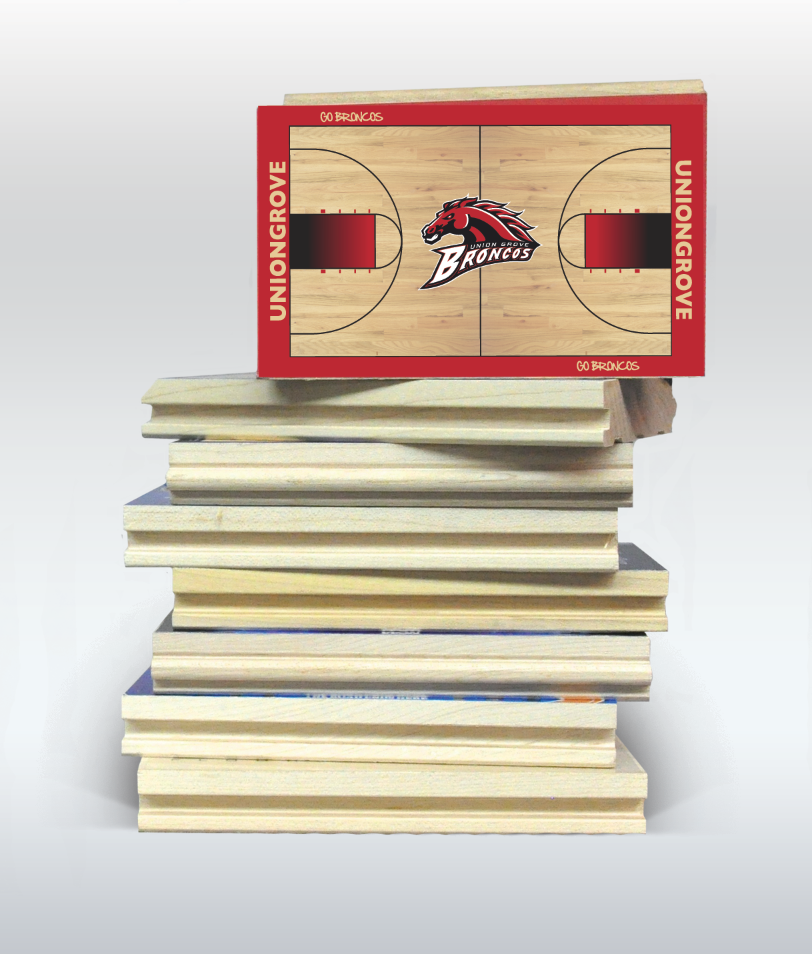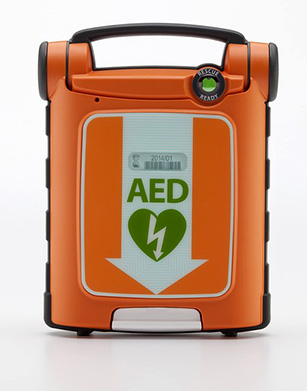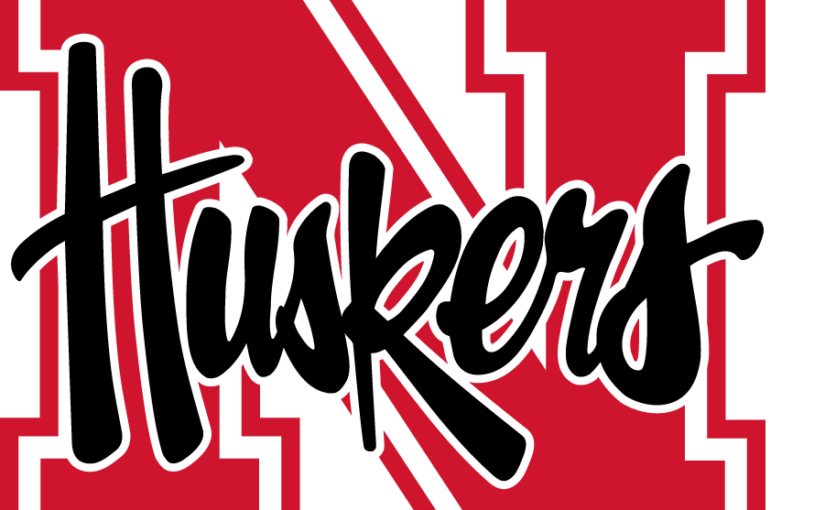The finishing touch
Adding new coats to your gym floor gives it a pristine look, but other maintenance may help protect students and save schools thousands
How well athletic directors know their gym floors could be the difference between thousands of dollars and the safety of the school’s students. And it’s not as simple as you might expect.
 Maintaining a wood floor comes with its own world of complex issues unique to every school. Cleaning with the wrong broom or failing to use rugs in the right places could create significant problems that can be avoided with a little education.
Maintaining a wood floor comes with its own world of complex issues unique to every school. Cleaning with the wrong broom or failing to use rugs in the right places could create significant problems that can be avoided with a little education.
Heiman sees mistakes all the time, and he’s used to working closely with schools to identify how to best meet their needs. This summer he estimates Schmidt Custom Floors will recoat 175 gyms while re-sanding, painting and finishing another 25. Schools often have a firm grasp on effectively caring for their gym surfaces, but many details go overlooked.
It’s those small nuances that tend to have a major effect on the quality and condition of your floor.
“Every environment comes with its own scenario,” Heiman said. “You have to be cognoscente of what’s required normally and what’s required to maintain your floor for the long term.”
Keeping floors dust-free
What Heiman wants athletic directors and maintenance supervisors to understand more than anything is the “coefficient of friction” a term describing a shoe’s ability to grip the floor. The more dust that accumulates on your surfaces, the more difficult it is for athletes to maintain their footing. When they’re playing sports that involve various cuts and turns, a dirty floor could put your team at a disadvantage, or even cause serious injuries.
Athletic administrators understand dust makes floors slippery, but many try to curb the problem with push brooms. That only spreads the dust across the floor, Heiman said.
Like other flooring contractors, Heiman is more than willing to give “tacking” demonstrations after finishing a job. His inexpensive solution requires some cheap towels, a 3-foot soft bristle push broom and a little bit of water. Wrap the damp towel around the broom and push it down the floor to pick up the dust. Once you get to the other side of the court, pull back the towel to a clean side and repeat. Heiman says it takes about five towels to clean a 10,000-square-foot gym.
“That’s what I show everyone,” he said. “When you dust your house, you don’t use a dry towel. You use a damp towel or it won’t work. Your floor needs to be cleaned, and you need to figure out the most professional process for that.”
Athletic directors also must be careful and make sure the maintenance staff is appropriately using floor scrubbers. The machines can scratch certain types of finishes or use too much water, which seeps through floors with few coats and damages the wood.
Heiman once had to refinish a college gym surface one month after the new floor was installed. The school tried to use the same scrubber on its new oil-based floor as it did on its water-based surface and ruined the finish.
“People tend to misunderstand the use of a scrubber,” Heiman said. “It’s not that they’re frowned upon, but you have to understand all the variables. The basic idea is you need to understand the time of the year and how many coats of finish are on the floor.”
The Maple Flooring Manufacturers Association (MFMA) does not recommend using a power scrubber on any maple floor. It warns schools that the equipment may damage the floor, finish or even void some warranties administered by the MFMA or independent contractors.
Keeping floors dust-free not only requires attention inside the gym. Much of that debris piggybacks on shoes when students come from outdoors or the hallways. Schools that fail to use mats or rugs at entry points are missing an opportunity to protect their floors from dust particles. Heiman also recommends that gym doors leading outside stay locked, forcing students to come through the main entrances.
“You have to put rugs or carpets at the entrance where they can’t miss it,” he said. “You think about the hundreds of kids going in and out of the gym everyday, and you must have them wipe their feet the same way they would at home.”
Get what you pay for
Athletic directors must demand quality and honesty from their contractors, and Heiman wouldn’t have it any other way. He prefers administrators ask several questions, giving them a thorough understanding of the most effective and efficient ways to care for their surfaces. Some contractors may try to upsell you on services you don’t need, so it’s important to educate yourself on what’s necessary.
One example is the proper number of coats during a standard recoating of your gym floor. Heiman said he’s never done a job that’s required more than two, yet some contractors try to sell schools on three.
“Less is more, so don’t be oversold on too much finish,” Heiman said. “The key is what little amount can I use to accomplish the job. The whole reason is the more coats you add the quicker you get to the point of separation in the finish.”
Contractors want your business, so it’s also reasonable to request a little extra help after the job is finished. That includes cleaning demonstrations or a gym evaluation to help determine your floor’s conditions and what maintenance is necessary. Heiman does both free of charge, and he says many other contractors will do the same.
Also consider scheduling a presentation by the contractor, where athletic department staff and other school officials can come to ask questions about the gym floor. This provides everyone an understanding on best practices for maintaining your facility and getting the most out of your surface.
Heiman recommends that any school hosting a presentation video record it for future reference. That helps in educating new coaches and teachers about caring for your floor.
“I actually suggest when I go to a school that I be videotaped,” Heiman said. “Everyone can ask questions and we’ll go over the problems and solutions. That way nobody can ever say, ‘I didn’t hear it. I didn’t know.'”
Understand your circumstances
Above all, athletic administrators must be experts on their own facilities. Understanding your needs and the variables that affect your surfaces, fields and buildings gives you the tools needed to make sound decisions. That includes factors that are anything but obvious.
HVAC systems that are inefficient or shut down after hours can lead to moisture buildup on the floors. Water that’s able to penetrate the wood causes all sorts of problems that could eventually force the school district to pay for a new floor. It’s also worth considering the gym’s location within the school. A facility with multiple exterior walls creates its own set of challenges with temperature control and entrances.
Don’t forget to consider your intended use. A gym used strictly for physical education is treated much differently than one that houses all the school’s varsity and junior varsity sports.
“The reason everyone has a different answer on the best way to care for your floor is because it’s circumstantial based on your job, and it has to do with every nuance,” Heiman said. “If you don’t clean your floor at all, it’s going to be completely different than a school with a similar finish. And if you have football practice and shot-putting in your gym, that also changes things. Every environment is its own scenario.”
No matter what, athletic administrators must not be afraid to ask questions. That’s what ultimately aids the sports program and school district in getting the most for its money.
“Have a true understanding of why something is done the way it is,” Heiman said. “Don’t just take someone’s word for it.”
Five tips for maintaining your gym floor
• Clean your floor’s surface with a lightly dampened cloth using a recommended cleaning product, according to the manufacturer’s instructions.
• Avoid using mops or cloths that leave excessive water on the floor, and don’t allow water to spill and dry on the wood surface.
• Control the humidity and closely monitor temperatures in the gym. Moisture can lead to cupping in the floor, where the wood begins to pull away from the sub-surface.
• Use mats or rugs at every doorway leading into the gym to help clean the debris off of shoes.
• Don’t be oversold on too much finish. The more coats you add, the quicker you get to the point of separation in your floor.
What you should know: Oil-modified vs. water-based finishes
Oil-Modified
• Amber in color and yellows the floor over time.
• The most cost-effective option.
• Re-coats are typically cheaper because material is less expensive.
• If re-sanded with oil, you can switch to water-based on the first recoat.
• One coat can be used on a recoat.
• Coefficient of friction (shoe-to-floor grip) lasts longer if not maintained regularly when compared to water-based finishes.
Water-Based
• Clear in color with no yellowing other than the natural wood.
• Typically more expensive.
• Two coats required most times during a recoat.
• If water-based is used, it is not recommended to switch back to oil-based.
• A more durable surface, but sometimes requires more cleaning to keep from becoming slippery.
• Odorless or very little smell compared to oil-modified.
* Information from Schmidt Custom Floors
Quick fundraising tip

Gym floor recoats can cost thousands of dollars. That doesn’t sound like much for school districts, but in an era of tighter budgets it means athletic departments must get creative with how they increase revenue.
One way to pay for maintenance is by selling small blocks replicating your school’s gym floor. Schmidt Custom Floors in Waukesha, Wis., sells the blocks for $3 to $8 each and they can raise $20 or more when sold to alumni, parents and the community in a fundraising campaign. If you sell enough blocks, the effort may pay for your maintenance entirely. Athletic programs can even enlist student-athletes and booster clubs to help get the word out.
Some districts cut up the actual gym floor and sell the pieces when it’s time for a replacement. Former student-athletes, especially those who walked the floor daily, are nostalgic and would happily pay to own a piece of their history.





